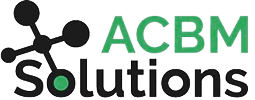The Bright and Promising Future of JDE as a Modern ERP: Part 1
Is JD Edwards dead? Not even close. Oracle is working hard to keep JDE competitive in the modern ERP landscape. In this series, we will cover 6 reasons some people think that JDE is on the way out and the facts to show it is here to stay and what makes it attractive to the next generation of ERP users and developers.
Perception 1: Lack of Strong Growth Signals a Decline
With an installed customer base of over 9,000 companies, Oracle JD Edwards has a robust standing in the ERP marketplace. Yet it isn’t known for growing its footprint with new customers looking for ERP solutions that deliver more “sizzle” and appear more modern. JDE has been around since the 1980s but has been outpaced by competitors. This plateaued user base may make JDE seem stale. But maturity is not a characteristic that signals impending decline. It signals strength.
Facts: JDE is a very stable product, and Oracle invests continuously to improve on this solid core platform and its applications. Other systems might seem flashier, but JDE has more functionality than other systems (one reason its user base is so loyal). One example of this functionality is the Orchestrator, a unique JDE tool which enables easy integration, automation, and mobile app backend development. Orchestrator is available at no additional cost to all JD Edwards customers and is included as part of the core tools license.
Perception 2: Oracle Has Stopped Releasing New Versions of JDE
Confusion over the future of JD Edwards was compounded recently by the news that version 9.2 of JDE EnterpriseOne would be the final release with the company no longer performing major upgrades. However, 9.2 simply signaled the shift to continuous adoption. Now, customers can do cumulative, incremental upgrades instead of massive, expensive, all-at-once overhaul projects.
Oracle realized the impression that was being created by using a static name for a continuous release version. They are now branding each yearly release as a “future ready” version, similar to car model branding. For example, Release 22 went live in 2021 and Release 23 will be out later this year.
Facts: Continuous adoption provides flexibility for customers to upgrade on their terms and is a characteristic of a modern ERP. Regardless of the branding and rebranding around version labels, these new updates are still incremental and easy to adopt from a technical perspective. You can see the latest new features in JDE EnterpriseOne Version 22 here.
Perception 3: JDE Has a Subpar Look and Feel
There have been significant improvements to the user interface over the last several years which have helped transform JDE into an ERP with a modern and crisp user experience. Someone who has not seen JDE in a while may not even recognize it, but the latest versions of JDE combine the rock solid system with a flashy interface. That said, not everyone wants to log into JDE for one reason or another, and that’s alright. There are other options for interacting with this robust ERP without using the traditional interface.
Facts: Custom web apps, mobile apps and integrated software solutions like ADEX allow users to interact with JDE without logging in. For example, ADEX makes it possible for users to stay in the familiar Excel interface while they leverage Orchestrator to upload and manage master and transactional data. With mobile apps, developers can create any front-end interface they like and simply plug into JDE via Orchestrator for the back-end. Either way, the full power of JDE EnterpriseOne is working behind the scenes. Having a choice in UI is part of what makes JDE so versatile and appealing.
Perception 4: JD Edwards Is Not Cloud-Forward
While JDE EnterpriseOne has a very long history as an on-premise solution. This is in contrast to new ERP systems that are built solely for cloud deployment and major brands that have relentlessly advocated for cloud adoption as the only rational path forward. JD Edwards ERP customers are not necessarily at the forefront of aggressive cloud migration, partly because many have been running their software successfully on-premise for decades. This does mean that it is delivered in a very traditional, license + maintenance model which may become outdated at some point.
Facts: JDE keeps investing in technology that will reduce the need for traditional development in favor of citizen development. This means the dependence on legacy hardware and infrastructure required for the on-premise implementation is slowly being eliminated. JDE can currently run on Oracle Cloud Infrastructure (OCI), which is a robust, secure, and scalable environment. JDE is also compatible with other IaaS cloud offerings.
Many customers have already migrated their JDE servers to the cloud. This is another step down the path toward a SaaS offering. All of the pieces are in place right now for a partner to be able offer JDE as a SaaS solution. Oracle may not want to transition JDE to a pure SaaS play at this time for fear of competing with its other Cloud offerings. However, it is only a matter of time before JDE Customers demand this type of offering and if Oracle doesn’t provide it, the partner ecosystem may step in to do the job.
Ready to learn more reasons that JDE isn’t dead?
Subscribe to our blog to receive the latest from ACBM.


